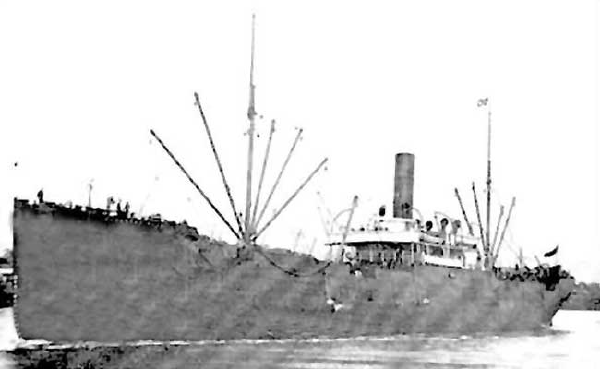| Shinyo Maru |
Shinyo Maru

| Operator | |
| Classification | (Captured ship, Chang Tou. Constructed in 1894 in Sweden) |
| Gross tonnage | 2,634 ton |
| Speed | |
| Departure point | Zamboanga |
| Departure date | 7 September 1944 |
| Destination | Manila |
| No. of POWs | 750 |
| Location of disaster | Off Sindangan Point, Mindanao Island (08-12N, 22-37E) |
| Date of disaster | 7 September 1944 |
| POW casualties | 667 |
| POW survivors | 81 |
| Photo | Source UNK. If the copyright holder is known, please advice. |
The POWs who had arrived at Zamboanga from Lasang in Davao Gulf aboard a ship with unknown name, but the number "86" on her side, waited for a few days there. Then they were ordered to transship to Shinyo Maru tied up alongside. The Japanese soldiers who had also arrived there aboard Shinyo Maru evacuated her, and embarked on "86" in a heavy rain. This shuffling was made in order to deceive the guerrillas who were informing the US intelligence of the Japanese vessels' movement.
Approx. 250 POWs went into the forward hold, and 500 into the after hold. A convoy was organized with Shinyo Maru, No. 2 Eiyo Maru (a tanker), and three other ships, and they were escorted by auxiliary gun-boat Kiso Maru and sub-chaser No. 55. The convoy departed Zamboanga on 7 September, and was steaming along the west coast of Mindanao Island, when they encountered the USS Paddle off Sindangan Point, approx. 100 NM from Zamboanga. At 1651, Paddle fired four torpedoes at Eiyo Maru, and two torpedoes at Shinyo Maru. Eiyo Maru changed course and ran herself aground in shallow water off Sindangan Point. Shinyo Maru was hit and blew apart.
Aboard Shinyo Maru, the hatches were torn off with an explosion, and the guards began killing the POWs by throwing hand grenades into the holds, and strafing the machine guns. They heard a big explosion, saw a flash, and everything turned orange-red. But it was not certain whether the torpedo or grenade exploded first. The first torpedo stuck forward of the bridge and the next hit between the after hold and the rear super-structure and exploded. Probably an explosion of the boiler split the stern section apart, and within a few seconds, 500 men were under the water surface.
Of the 750 POWs, most of them were killed in the explosion, or drowned in the ship. Nearly all of those who escaped from the ship's sinking were either shot by the guards or drowned on their way to the shore. About 30 POWs who swam to near Eiyo Maru were rescued, but they were all shot that night. One POW, however, hid in the anchor bay, climbed down the anchor chain, and swam to the shore.
On the following morning, the natives found the wreckage and bodies of the POWs on the beach. They searched along the beach, and rescued 82 POWs (one died later on). The remaining 81 was taken to the guerrillas' hideouts. They contacted Australia by radio, and on the night of 29 September, the USS Narwhale surfaced in Sindangan Bay, and successfully rescued all POWs, and then took them to Mois Woendi, a small atoll approx. 10 NM south of Biak Island where the US Navy base was.
Note: One document indicates the number of the POWs as 772, casualties 688, and survivors 84, respectively.